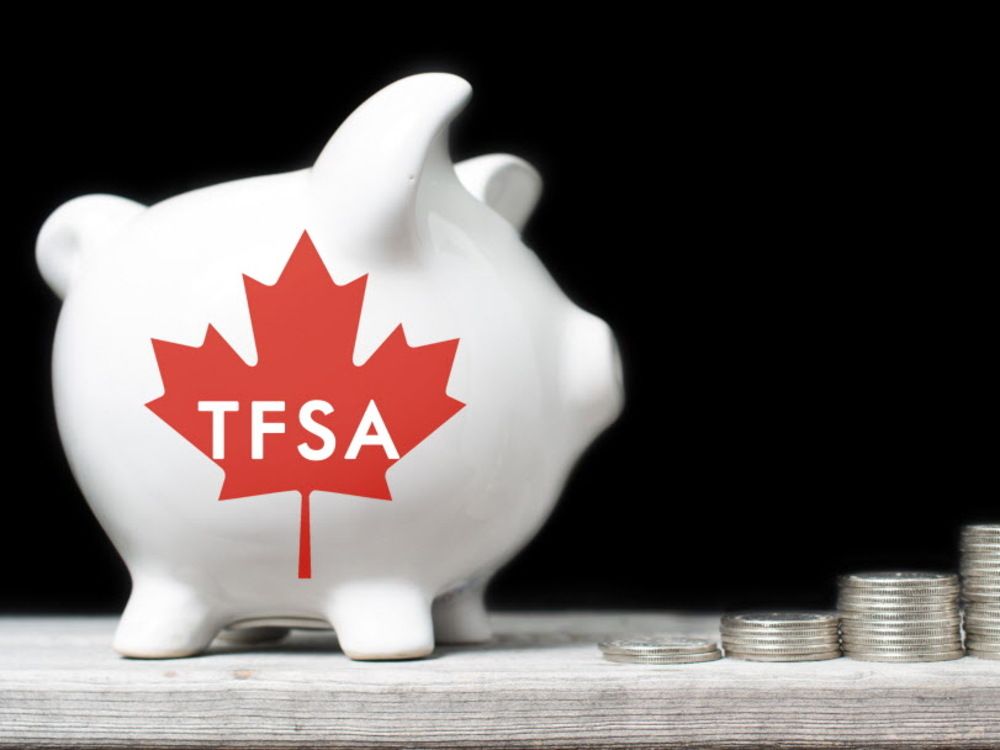If you’ve ever looked at a brand like Nike or Adidas and thought, “I want to be the one shaping that story,” you’re already thinking like a brand manager. This isn’t just another marketing role; it’s a career path for people who want to own how a company is seen, felt, and remembered.
What is a brand manager?
A brand manager shapes a company’s brand identity. They lead campaigns, track market trends, and collaborate across teams to build perception and loyalty. Salaries typically range from $96K to $124K, and key skills include strategic thinking, creative direction, and asset management. Most start in marketing or content roles and grow through experience.
Brand managers analyze consumer behavior, track trends, guide creative teams, and manage everything from launch campaigns to product messaging. And with content living everywhere, from TikTok to billboards to email, they rely heavily on brand asset management (BAM) tools to keep visuals, voice, and messaging consistent across teams and channels.
If you’re wondering what it takes to become a brand manager, how much they earn, or what makes them successful, this guide has you covered.
TL;DR: Everything you need to know about becoming a brand manager
- What does a brand manager do? They shape brand identity, messaging, and perception across all channels.
- How is this different from a marketing manager? Brand managers focus on long-term image; marketing managers drive short-term campaigns.
- Why is consistency important? It builds trust, recognition, and long-term brand equity.
- What tools do brand managers use? Brand asset management systems, analytics tools, and collaboration platforms.
- What’s the ROI of brand management? Stronger loyalty, better recall, and increased customer lifetime value.
- How do you become a brand manager? Gain marketing experience, learn brand strategy, and lead creative projects.
Brand manager vs. marketing manager: What’s the difference?
If you’ve ever wondered whether a brand manager and a marketing manager are essentially the same role with different titles, you’re not alone. While the two positions share some overlap, their core focus areas and performance metrics are distinct.
Think of it like this: A brand manager builds the brand. A marketing manager broadcasts it.
| Aspect | Brand Manager | Marketing Manager |
| Core focus | Long-term brand identity, positioning, and audience connection | Short- to mid-term campaign execution and performance |
| Primary KPIs | Brand equity, customer loyalty, and audience perception | MQLs, campaign ROI, traffic, and conversion rates |
| Strategic role | Defines the “why” and “who” of the brand (purpose and audience) | Decides the “how” and “where” (tactics, platforms, channels) |
| Key tools | Brand guidelines, customer personas, sentiment analysis, PR strategies | CRM systems, email marketing platforms, ad managers, SEO tools |
| Typical deliverables | Brand strategy documents, visual identity briefs, tone-of-voice frameworks, and messaging playbooks | Promotional campaigns, performance reports, landing pages, analytics dashboards |
| Time horizon | Long-term brand health and consistency | Short-term to mid-term campaign results |
| Common overlap | Collaboration on positioning, messaging, and aligning campaigns to brand values | Collaboration on positioning, messaging, and aligning campaigns to brand values |
In smaller teams or startups, these responsibilities often blend. But as companies grow, separating brand management from campaign-focused marketing ensures both long-term brand equity and immediate performance goals are effectively managed.
What does a brand manager do?
Brand managers are responsible for building, maintaining, and evolving a company’s brand identity. They ensure the brand resonates with the right audience, reflects company values, and remains consistent across all marketing channels.
Their responsibilities typically include:
- Defining brand strategy, voice, and positioning
- Briefing creative teams or agencies on brand assets
- Overseeing visual identity and messaging guidelines
- Monitoring competitor brands and market trends
- Leading brand campaigns and product launches
- Collaborating with PR, advertising, and sales teams
- Managing brand consistency across packaging, content, and digital platforms
“The brand manager has to define the brand, find its audience, build and strengthen the connection… while building and guarding the brand using the full marketing mix.”
Daleep Chhabria
former Senior Brand Manager for Call of Duty
Brand managers often act as internal brand ambassadors, ensuring everyone, from creative teams to customer service, is aligned in how the brand is communicated and perceived.
Skills every successful brand manager needs
Becoming a brand manager requires more than just creativity or business savvy — it demands a unique mix of strategic thinking, emotional intelligence, and cross-functional leadership.
Here are the essential skills every brand manager should master:
- Strategic thinking: The ability to see the big picture and translate brand goals into actionable plans.
- Creative direction: Guiding design, messaging, and storytelling that align with the brand’s identity.
- Analytical mindset: Interpreting data from brand performance, sentiment analysis, and market trends to inform decisions.
- Communication & storytelling: Crafting a consistent voice and message across all channels that emotionally resonates.
- Cross-functional collaboration: Working effectively with product, sales, design, and PR teams to align messaging and goals.
- Project management: Juggling multiple campaigns, assets, and timelines while maintaining consistency.
- Tech literacy: Familiarity with tools like Google Analytics, social listening platforms, and marketing dashboards.
- Brand asset management: Using platforms like Brandfolder, Bynder, or Frontify to organize assets, maintain consistency, and scale branding efficiently across teams and channels.
Top brand asset management tools
Brand managers rely on powerful Brand Asset Management (BAM) tools to organize, update, and distribute visual assets across teams and channels. According to G2’s 2025 reviews and user ratings, here are the most trusted platforms this year:
- Bynder: Best for enterprise-grade brand governance and centralized asset control
- Canto: Easy-to-use DAM with robust permissions and access management
- Brandfolder: Strong user experience with powerful visual asset previews
- Ansira: Great for distributed brand management across franchises or field teams
- Canva: Ideal for teams needing intuitive design + brand template control at scale
*These are the top 5 leading brand asset management software solutions from G2’s Summer 2025 Grid® Report.
How much do brand managers make?
If you’re considering a career in brand management, salary is a key factor. The good news? It’s a well-compensated role, especially as you move into senior and strategic leadership positions.
According to Glassdoor, the average salary for a brand manager in the U.S. is $95000 – $175000 per year.
Here’s a quick snapshot:
- Base salary (avg): $96,333/year
- Additional compensation: $11,667 – $27,859
- Total comp range: $108,000 – $124,000 (mid-level average)
Compare that to a typical marketing manager, who earns around $81,078/year, and it’s clear that brand-focused roles often command higher pay due to their strategic and cross-functional impact.
Salaries can vary significantly based on location, company size, industry, and level of experience. For example:
- Entry-level (Brand Coordinator): $50,000–$65,000
- Senior Brand Manager: $115,000–$140,000+
- Director of Brand: $140,000–$180,000+
How to become a brand manager
Becoming a brand manager doesn’t require a rigid career path, but it does demand a powerful mix of strategic thinking, creativity, data fluency, and cross-functional leadership. Whether you’re a recent graduate or pivoting from another marketing role, this step-by-step guide outlines how to build the experience and skills you need to land — and succeed in — a brand management role.
Step 1: Study marketing, business, or communications (optional but recommended)
While a formal degree isn’t mandatory, many brand managers hold bachelor’s or master’s degrees in marketing, communications, business administration, or psychology. These programs help build a foundation in:
- Consumer behavior
- Marketing strategy
- Brand equity and market positioning
- Analytics and research methods
That said, self-taught professionals, career-switchers from roles like design, writing, or analytics, or boot camp grads can absolutely break in—but they’ll need to demonstrate fluency in core brand concepts such as audience segmentation, messaging hierarchy, and brand storytelling.
Step 2: Get entry-level experience in marketing or related roles
Start with roles that expose you to real-world brand-building. Entry-level positions that can serve as a launchpad include:
- Content marketing
- Social media management
- PR or communications
- Performance marketing
- Email marketing
- Customer experience or product marketing
- Sales enablement
These roles teach you how messaging, campaigns, and customer insights come together to shape a brand — and help you build your collaborative muscle across teams like design, product, and sales.
Step 3: Build brand strategy knowledge
Develop a deep understanding of how brands operate. That includes:
- Brand positioning and differentiation
- Tone of voice and personality
- Visual identity and consistency
- Brand equity and perception tracking
Study branding books, listen to podcasts, read agency case studies, and observe how top companies build trust and memorability. Go further by writing your own brand guidelines or creating fictional brand briefs to sharpen your skills.
Step 4: Learn to use branding and analytics tools
Modern brand managers need to be comfortable with both creativity and data. Get hands-on with tools like:
- Google Analytics and Looker Studio (for behavior insights)
- G2 and SEMrush (for competitive and sentiment benchmarking)
- Social listening platforms
- DAM platforms
- Survey and feedback tools
These tools help brand managers monitor performance, track sentiment, and ensure alignment across touchpoints.
Step 5: Lead or support a branding project
Real-world brand experience is critical. Try to:
- Contribute to a rebrand or refresh
- Create a messaging playbook
- Lead creative for a product launch
- Volunteer with nonprofits or small businesses to shape their brand presence
- Build a mock case study with branding decisions and rationale
Step 6: Tailor your resume and pitch
When applying, highlight specific brand-related wins from past roles, such as:
- Increasing brand awareness or share of voice
- Rolling out a new brand narrative or positioning
- Driving consistency across campaigns or regions
- Collaborating across teams to ensure brand alignment
Finally, make sure your brand is buttoned up: Your LinkedIn profile, portfolio, resume, and even email signature should reinforce your unique value as a creative and strategic thinker.
Advice from current brand managers
What better way to learn the ins and outs of the brand manager career path than from those currently in the role? To get the best understanding of what it’s really like, I asked successful brand managers in a variety of industries what their typical days look like, lessons they’ve learned while on the job, and any advice for those aspiring to break into the industry.
Here’s what they said:
What does a typical day look like?
“Being a brand manager is an all-in-one job: a bit of a brand strategist, UX designer, data analyst, and project manager. I usually describe my job as being a Product Owner, but the Product is the whole brand. My brand is growing faster than ever, and our branding needs to keep up with all those changes. With that pace, it’s not easy, especially when more and more new people are involved in the brand’s communication. To keep it all together and provide a state-of-the-art brand experience for both clients and employees, you need one thing: coherence & repeatability.”
– Pawel Hahn, Brand Manager, Netguru
“A typical day might include researching the marketplace to determine product-market fit, creating advertising strategies, designing ads, managing promotional activities, evaluating pricing and sales, or finding ways that the brand can expand to a wider audience.”
– Ryder Meehan, Co-Founder & CEO, Upgrow
“No two days are the same in branding. Depending on different client goals, I might be in a client’s office refining strategy and interpreting data for marketers, on the phone with journalists clarifying information and providing them with assets for a media placement, or out of town vetting industry-specific events to determine if building awareness there would be a strategic fit for our clients.”
– Jonathan Mentor, Founder & CEO, Successment
“A typical day includes strategy sessions, content writing, working with graphic designers, and pretty much every other associated team. You are steering the ship and guiding the vision of how you believe the brand should be represented – the common thread, tone, voice, values, and impressions you want your brand to make on your audience. So one day you may be outlining the goals you want the brand to achieve, and the next day you are outlining the assets you have to help get you there, then you may spend two days writing content. Everything moves very quickly!”
– Matt Erickson, Marketing Director, National Positions
“This really varies from one brand marketer to another, based on the company’s needs and the brand’s maturity. I typically start by reading up on my clients’ deliverables and the project milestones that need to be completed for the day. I then review (and add to, if appropriate) recently posted content and check social media engagement. Then I go into brand campaign planning and status checks before diving into content writing and editing.”
– Swati Kumar, Founder & Chief Story Consultant, Plotline
The most important tips and tricks
“An important tip for those aspiring to be a brand marketer is to always consider the user experience when developing your efforts. This can be their experience with a physical product or within a retail environment. One way to get more perspective on this is to actually immerse yourself in the environments. For example, in my role as a brand marketing manager, I spent about half of my time on the road and in stores to see how the brand was being executed at the ground level. Sometimes brand initiatives make sense on paper, but it’s critical to see how they are being perceived on the ground level, both from a customer and employee execution standpoint. Another tip is to be very organized. There are a lot of moving parts in an organization, and many details that go into the conceptualization of a brand or marketing of a service or product. Set daily schedules and goals and use visual project timelines like Gantt charts to track and sustain progress.”
– Chris Stasiuk, Founder & Creative Director, Signature Video Group
“Brand managers need to be great multitaskers and have the ability to see the big picture, or vision, and how many small elements fit into that vision. They also need to be comfortable in a leadership position, as your job is to drive the brand forward.”
– Deanna Backos, Owner, the midnight oil group
“Communication is the most important characteristic to focus on. A brand manager’s job should be open and honest. This means regularly engaging customers and responding to any questions or concerns they may have. Remember that one tiny mistake can affect your brand in a negative way, so be careful not to step on anyone’s toes by being unreliable.”
– Nathan Ripley, Director, Maid Just Right
“Be passionate, have finesse, and be BOLD. Branding is all about creativity and moving a client outside of their comfort zone. Take risks and be accountable for the outcomes of those risks. Remain strategic and keep client ROI top of mind, and monitor how your efforts drive business. No one remembers a brand that plays it safe. There are a lot of dreamers in the field, and it’s important to remember that a client is going to be concerned with their bottom line and the return on their investment in branding. If you are managing a brand, you should always keep in mind how your outcomes can be measured.”
– Jonathan Mentor
“Form habits around your strengths. To be a successful marketer, you don’t need to be an expert in every channel; one or two areas of expertise will be enough. However, experiment first with a bunch of different skills to see what is the best fit for you!”
– Morgan Lathaen, Marketing & Brand Coordinator, thumbprint
“You need to have both vision and skill – be adaptable and focused. Ultimately, this is not a role for a rinse-and-repeat personality. Know that not everything is going to go as planned, and you will need to embrace this ambiguity.”
– Matt Erickson
“Try to be clear on what your brand actually is. A company’s brand isn’t what the leaders want it to be; it’s how the target consumers actually perceive it. In order to improve something, you must first identify it properly.”
– Swati Kumar
“It helps to have studied marketing to get into brand management, but it’s not essential. If you’re passionate about getting into brand management, there’s a lot you can do to build your understanding. Read marketing publications, case studies, and analyze a brand’s marketing activities to try and figure out the strategy and objectives for yourself! My absolute favorite tip for anyone without a job in brand management – build one because you learn by doing.”
– Daleep Chhabria, Marketing Expert & Strategist, Growth Forte
“I entered branding from a completely different industry. In previous roles, I found myself solving the problem that I was hired to solve, but wanting to expand and make a difference. Part of our mission at my firm is to partner only with clients that are developing solutions that will drive benevolence and the greater good. The difference between what I was doing before and what I’m doing now is that I get to do what I’m passionate about every day!”
– Jonathan Mentor
“I evolved into this path moving from business education to content, video editing, start-ups, etc. I have had my hands in almost every aspect of the business, so I enjoy the fact that I can work across teams and speak different languages. If you are considering this path, you need to like people, enjoy telling stories, and be willing to grind and be flexible.”
– Matt Erickson
What are the most important lessons you’ve learned?
“My biggest lesson learned in brand management and marketing overall is that the primary purpose of marketing within your organization is to support sales. If you don’t connect the two, you cannot effectively grow your brand, no matter how great your marketing executions might be. Much of brand management is about planning, coordination, and control. Therefore, another tip is to position yourself confidently as the owner, guardian, and expert on your brand within your organization.”
– Daleep Chhabria
“Some of the best lessons I’ve picked up over the years are to first understand the customer on a very deep level. Give them a name and list their interests and how they spend their time. It sounds excessive, but it really helps marketing to focus on that specific user and think about how they would respond to your message.”
– Ryder Meehan
“I’ve learned that this field is highly strategic and misunderstood. Branding means different things to different clients, and managing outcomes and expectations is critical to success. Drawing upon my experiences from different industries I’ve worked in, the end goal is no different: driving sales. Balancing strategy and creativity is what drives this business and its professionals.”
– Matt Erickson
“I have learned that a big part of brand development is actually very data-driven. Making decisions on what needs to be done next and how to move forward requires a review of progress and success. This is often best measured numerically, which requires a good set of goal metrics at the beginning of a project and target milestones throughout.”
– Swati Kumar
“I have learned that growth is everything. Think about your job as being the plane’s pilot rather than the air traffic controller. Everything you do should help your brand grow. Use centralized asset management for your brand. You would be surprised to learn how much time is wasted on ‘looking for things’. Simplify your branding toolbox. Make sure that your team can reuse each other’s assets. Build a scalable system, and whatever you do, always ask yourself: can we make a template out of it for everyone? Is it applicable to more than one channel? A brand is a living thing. Keep your brand’s guidelines updated and easy to use. Nowadays, anyone in the company can be your marketer.”
– Pawel Hahn
Frequently asked questions about brand managers
Q. What are the key responsibilities of a brand manager?
A brand manager is responsible for shaping and protecting the brand’s identity, voice, and positioning across all customer touchpoints. Their duties typically include conducting market research, developing brand strategy, overseeing creative direction, and monitoring brand performance.
Q. Is brand management a good career?
Yes, brand management is considered a dynamic and rewarding career. It combines creative thinking with strategic execution and offers exposure to high-impact business decisions.
Q. Do you need a marketing degree to become a brand manager?
Not necessarily. While many brand managers hold degrees in marketing, communications, or business, it’s not a strict requirement. What’s more important is demonstrating your ability to build and manage a brand.
Q. How is a brand manager different from a product manager?
A brand manager focuses on audience perception, positioning, and emotional connection. A product manager, on the other hand, is focused on the development, functionality, and lifecycle of a specific product.
Q. What industries hire brand managers the most?
Brand managers are in demand across a wide range of industries, especially consumer goods (CPG), retail, fashion, tech, media, healthcare, and food & beverage. Any business that relies on customer perception and brand loyalty benefits from having dedicated brand leadership.
Q. What does a typical day look like for a brand manager?
A brand manager’s day may include planning brand campaigns, reviewing creative assets, guiding messaging, analyzing sentiment or performance data, and collaborating with teams like design, sales, and product.
Ready to manage your brand?
Stepping into the role of brand manager is no small feat; you’re the strategic mind behind how the world sees, feels, and connects with your brand. It’s a high-impact position that blends creativity with leadership and vision. But with the right skills, tools, and mindset, you can shape powerful brand narratives and drive meaningful growth.
Start by applying the advice from seasoned brand experts, build hands-on experience, and stay curious. Whether you’re climbing the ladder or pivoting into branding for the first time, your path to becoming a successful brand manager starts now.
Learn how to bring your brand to life in the real world with our guide to brand activation.
This article was originally published in 2021. It has been updated with new information.









